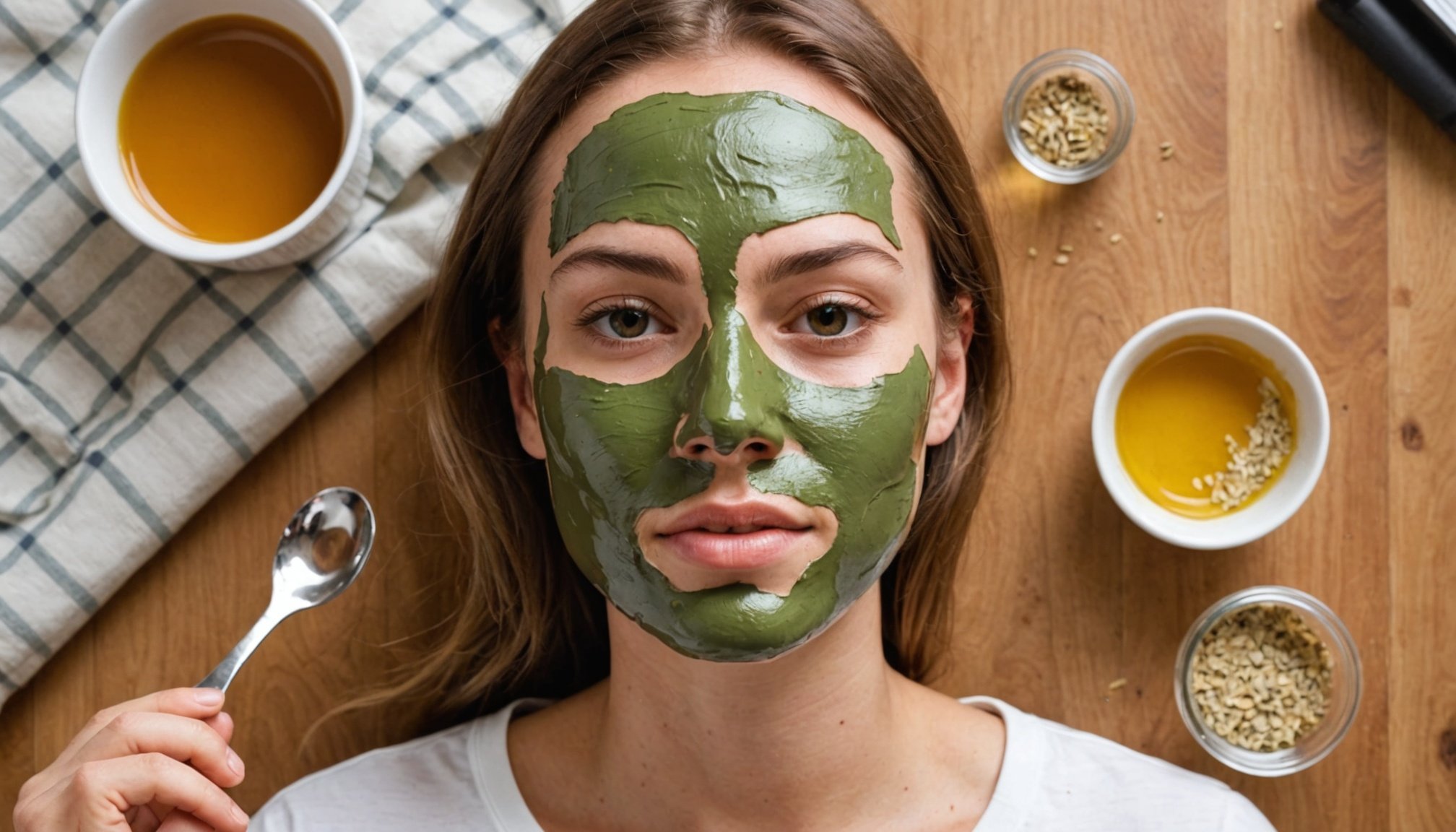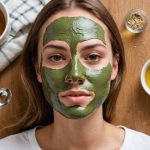Introduction to DIY Face Masks for Oily Skin
Creating a DIY face mask offers a great opportunity to tailor skin care specifically for oily skin, addressing common issues like excessive shine and clogged pores. One key advantage is the use of readily available kitchen ingredients. These ingredients not only save time and money but also reduce the risk of exposing skin to harsh chemicals.
DIY face masks can be customized to align with specific skin care goals, allowing you to harness the natural properties of each ingredient. For oily skin, ingredients like oatmeal, honey, and yogurt work wonders. Oatmeal has soothing properties that can help reduce irritation. Honey is a natural humectant that helps maintain moisture balance. Meanwhile, yogurt’s lactic acid gently exfoliates, leaving the skin smooth.
In the same genre : Elevate Your Evening Attire: Creative Ways to Integrate Reflective Materials for Safety and Style
The crucial factor in using kitchen ingredients is they are often more straightforward and less processed than commercial products. This means you can have better control over what goes on your skin, minimizing the potential for unanticipated reactions. Whether you’re aiming to achieve more balanced skin, reduce breakouts, or enhance skin tone, DIY masks can provide tangible benefits. The convenience and adaptability of making a DIY face mask at home can be a game-changer for those with oily skin.
Common Kitchen Ingredients for Oily Skin Masks
When treating oily skin, some common kitchen ingredients can be highly effective.
Also to discover : Mastering Lipstick Selection: The Ultimate Guide to Choosing the Perfect Shade for Any Event
Ingredient 1: Yogurt
Yogurt is renowned for its benefits for oily skin. Its lactic acid content helps gently exfoliate and cleanse the skin, leading to a smoother texture. For an effective face mask, incorporate plain, unsweetened yogurt as a base for other ingredients like honey or oats. When selecting yogurt, opt for organic options without added sugars or flavors, as additives can irritate the skin.
Ingredient 2: Honey
With its natural antimicrobial properties, honey serves as an excellent remedy for oily skin. It helps moisturize without clogging the pores, which is essential for maintaining healthy skin balance. Use raw honey for maximum benefits in face masks, applying it directly or mixed with other items like yogurt.
Ingredient 3: Oats
Oats provide excellent exfoliation and oil absorption. To prepare, blend the oats into a powder before mixing them with other ingredients. Try combining oats with yogurt for a simple, effective mask. The variety of potential combinations allows you to tailor the mask to meet specific skin needs.
Step-by-Step Instructions for Creating Your Face Mask
Crafting a DIY face mask recipe at home can be both rewarding and beneficial for your skin. To begin, ensure you have a clean workspace and all necessary materials within reach. Proper preparation, such as tying back hair and washing your face, sets the stage for effective application. Not all face masks are created equal, so it’s crucial to understand the various mixing techniques to suit your needs.
General Preparation Guidelines
- Ingredients: Choose natural ingredients like honey, yogurt, or oats that align with your desired benefits.
- Tools: Use a clean bowl and spoon or a small whisk for mixing.
Mixing Techniques for Various Ingredients
When preparing your face mask, consistency is key. Blending thicker components like avocado with liquid elements such as lemon juice requires gradual incorporation. Start by mashing or blending the solid ingredient then slowly include the liquids. This patience ensures a smooth consistency without lumps.
Customizing Masks for Skin Type and Sensitivity
Adapt your recipe according to your skin type. Oily skin may benefit from ingredients like clay or tea tree oil, while dry skin welcomes moisture-rich options such as honey and aloe vera. Test a small patch before full application to assess any sensitivity and adjust the formula accordingly. By tailoring your mask, you cater to both the condition and sensitivity of your skin, maximising the benefits of your DIY effort.
Benefits of Each Ingredient for Oily Skin
For those navigating the complexities of oily skin care, understanding the benefits of ingredients can be transformative. Each component within a skincare regimen has a unique nutritional makeup that contributes to its effectiveness. Ingredients like salicylic acid are particularly adept at addressing excess oil and clogged pores. Derived from willow bark, salicylic acid penetrates deeply to exfoliate skin, reducing sebum and preventing acne, a common concern for oily skin types.
Meanwhile, niacinamide, a form of Vitamin B3, stands out for its ability to calm inflammation and reduce the size of pores—the latter being an ongoing challenge for oily skin. Scientific studies validate niacinamide’s role in reducing the appearance of blemishes and improving overall skin texture.
Additionally, ingredients such as zinc play a crucial role in maintaining the skin’s oil balance. Zinc’s anti-inflammatory properties can help alleviate redness and irritation, while its ability to regulate oil production gives it an edge in oily skin care.
Incorporating these ingredients, each backed by scientific research, into your routine can lead to noticeable improvements. Tailoring a skincare strategy with such components addresses the specific issues of oily skin, moving beyond surface-level treatment to foster long-term skin health and balance.
Safety Tips for DIY Face Masks
Creating your own face masks at home can be both fun and rewarding, but it’s important to keep safety tips and skin care precautions in mind. Before applying any DIY face mask, it is wise to perform a patch test. This simple step can help you avoid potential allergic reactions. To do this, apply a small amount of the mask mixture to an inconspicuous area of your skin, such as behind your ear or on your wrist, then wait 24 hours to check for any irritation.
In terms of frequency, homemade masks should not be overused. Most skin types benefit from a once-a-week application, or twice if your skin tolerates it well, but more frequent use may cause irritation or oversensitivity. Paying attention to how your skin responds is crucial for maintaining its health.
Storing leftover ingredients correctly is another important safety measure. Fresh ingredients such as avocado or yogurt should be refrigerated and used within a few days to maintain their effectiveness and safety. Label and date your containers to help track their freshness.
By following these safety tips, you can enjoy the benefits of DIY face masks while protecting your skin’s health and vitality.
Variations of DIY Face Masks
Creating your own face mask can be both fun and beneficial, but understanding different face mask variations can enhance your skincare routine.
Seasonal Variations
Using seasonal, fresh ingredients can dramatically improve the effectiveness of your DIY masks. For example, during the summer months, you can use aloe vera for its soothing properties, while during the winter, avocados are ideal for hydration. Tailoring your mask to seasonal variations not only ensures the freshness of ingredients but also addresses skin needs throughout the year. Adaptations can cater to specific skin issues, like using citrus for brightening in spring.
Mask Combinations
Combining various ingredients can deliver enhanced benefits. For instance, mixing honey and oatmeal offers both moisturizing and exfoliating properties, ideal for those dealing with oily skin. To address oily skin concerns, a mask with clay, tea tree oil, and lemon juice works wonders. These customizations allow you to address multiple skin concerns simultaneously.
Usage Recommendations
For optimal results, understanding how often to apply these face masks is vital. Generally, applying a mask once or twice a week is recommended, depending on your skin’s needs and tolerance. Following masks with a gentle moisturiser ensures the skin remains hydrated and helps maintain the benefits reaped from your homemade face mask adventures.











